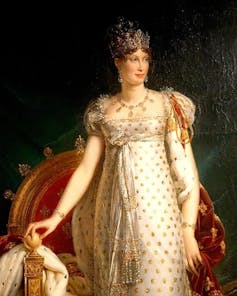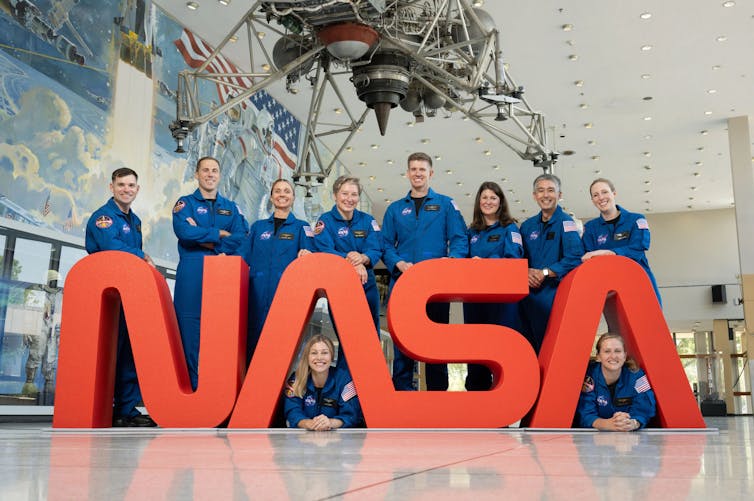Source: The Conversation – UK – By John Flint, Professor of Town and Regional Planning, University of Sheffield
The winner of the 2025 RIBA Stirling prize offers an inspiring blueprint for addressing some of our current housing crises. It is also an opportunity to reflect on long-standing dilemmas in providing appropriate accommodation for all.
Architects Witherford Watson and Mann won the prize, for the second time, for the Appleby Blue development. Run by the United St Saviours Charity in Bermondsey, South London, it provides 57 units of one and two bedroom apartments for residents aged over 65, with 11 units fully wheelchair accessible.
It is explicitly a new take on urban almshouses, which date back to the Middle Ages. Throughout their history, almshouses have primarily provided accommodation for the elderly.
Read more:
How the high-rise tower block came to symbolise the contradictions of modern Britain
The almshouse was historically called a “hospital for the poor”. One of the architect’s behind Appleby Blue, Stephen Witherford, points out the intersections between housing and health crises. Often hospital beds are occupied by elderly people because of a lack of appropriate accommodations that fit their needs, paired with a wider lack of mechanisms enabling elderly residents to downsize from their existing homes, Witherford notes.
United St Saviours Charity can be traced back to 1541. The charity’s modern day specialist staff carry a lineage going back to the initial wardens charged with managing the estate and looking after the poor of the parish.
Appleby Blue attempts to address two intersecting crises: the lack of accessible and affordable housing, especially in London and growing levels of loneliness among older people. We face a paradox, while cities like London become more densely populated social connections between us are seen to have reduced, particularly since COVID-19.
The development was partly funded through Section 106 agreements between Southwark Council and the developer JTRE. These legal agreements ensure infrastructure, services, or affordable housing to mitigate the impact of a new development. This is an important agreement when developers are challenging the financial viability of providing affordable social housing or infrastructure as part of new development programmes.
In addition to a design focused on light and space and technical adaptions enabling residents to live as independently as possible, its principal aim is to foster connections – both between residents and with the wider community.
The new development retains the courtyard that has often been a feature of almshouses. As well as the shared courtyard there is a rooftop garden, and spacious balconies, which are provided as spaces for interaction. Britain has a somewhat chequered history of attempts to engineer sociability through the architecture of public housing, including the use of wide deck access in high rise developments.
However, the development seeks, in the words of the judges, to “combine function and community”. This mission recognises that the cohesive design needs to be complemented by shaping daily practices in a way that reduces isolation. The communal kitchen is at the heart of this and while the development includes resident-only spaces, it also emphasises public communal areas, a welcome contrast to “poor door” mechanisms to segregate social and private homes in some other London developments.
There is a deliberate attempt to promote interactions with the wider local community, including shared cooking and dance classes and singing groups. Intergenerational engagement is particularly emphasised, with a toddler’s group and local school children involved in the social activities. This offers an innovative take on a longstanding dilemma in social housing about whether to aim for allocations that mixed generations and household types or to provide more specialist, but separate, accommodation.
Encouraging residents to engage in communal activities has been a constant feature, for example of the housing cooperative movement, with mixed results. But here, the focus is on shared interests and mutual skills development, for example cooking, rather than on volunteering or involvement in the management of the development.
Appleby Blue is also deliberately an ongoing site of research. It includes accommodation spaces for researchers. A study by the University of Bournemouth has evaluated the impact of the development on its residents and other studies are ongoing. This is a welcome reminder about how important robust scientific evidence is in understanding what works in housing for the elderly.
There is much to admire, architecturally and socially, about Appleby Blue. An obvious challenge is the extent to which its specific elements, from affordability to design and specialist support, could be scaled up or replicated more widely given the extent of the crises we face. But that doesn’t mean we shouldn’t celebrate and learn from its pioneering features, including its lessons for tackling loneliness, which is certainly not confined to the elderly.
Looking for something good? Cut through the noise with a carefully curated selection of the latest releases, live events and exhibitions, straight to your inbox every fortnight, on Fridays. Sign up here.
![]()
John Flint is not currently receiving funding from an organisation. He has previously received research funding from the UKRI, Joseph Rowntree Foundation, Nuffield Foundation, a number of UK Government Departments, the Scottish Executive/ Government, the Welsh Assembly Government and local authorities He is a Trustee of the Housing Studies Charitable Trust.
– ref. Stirling prize 2025: Appleby Blue pioneers affordable social housing tackling elderly loneliness – https://theconversation.com/stirling-prize-2025-appleby-blue-pioneers-affordable-social-housing-tackling-elderly-loneliness-268017









